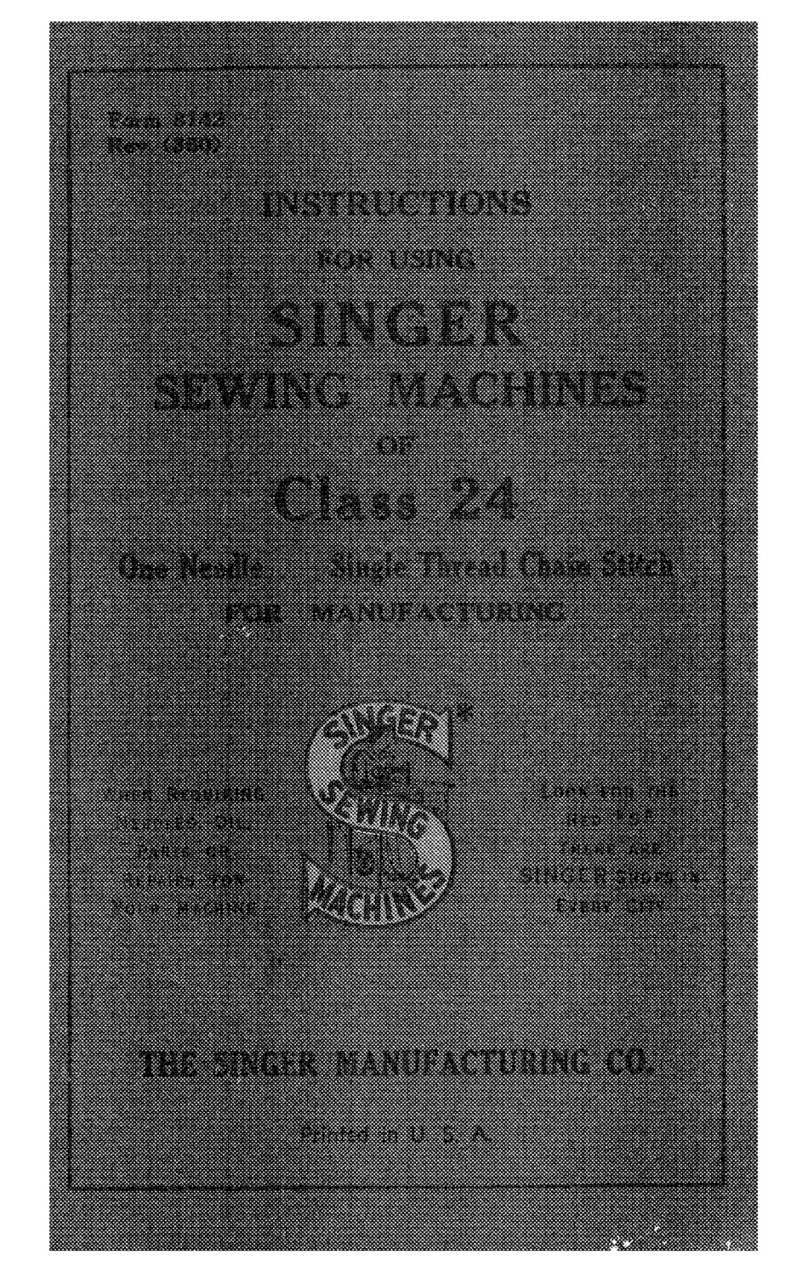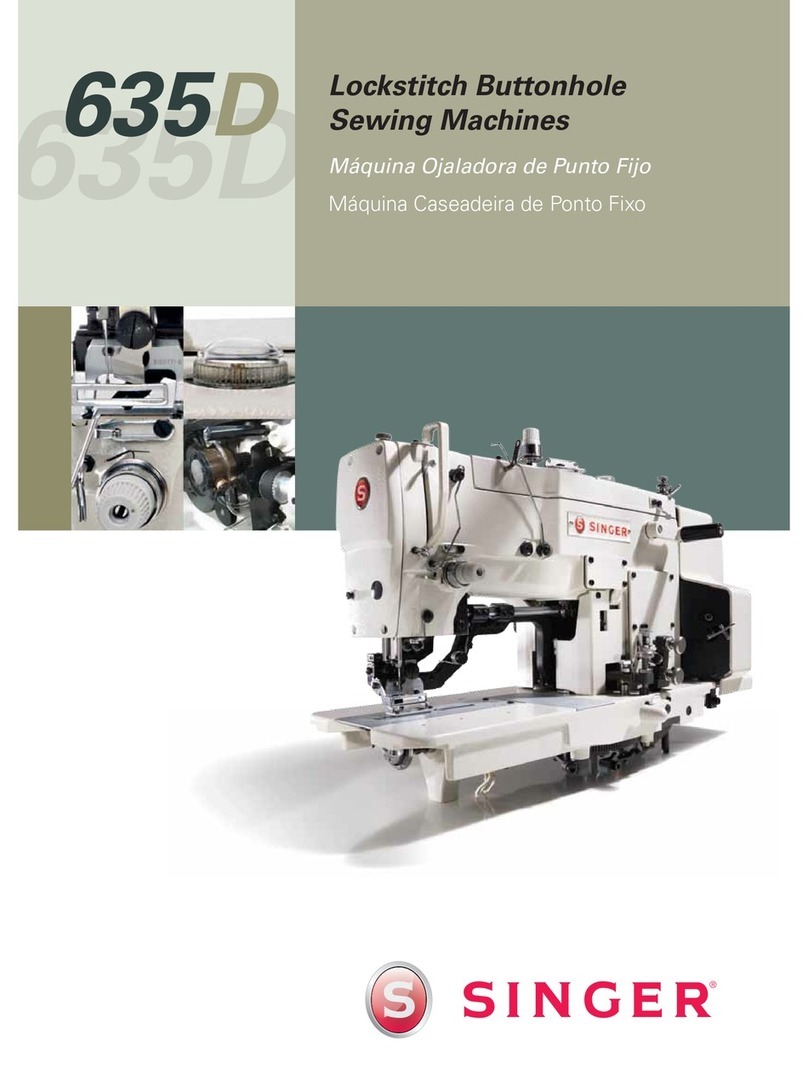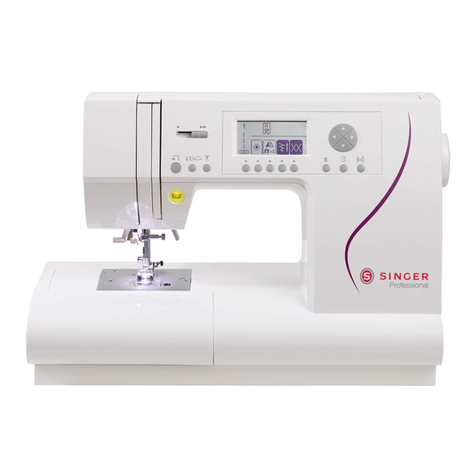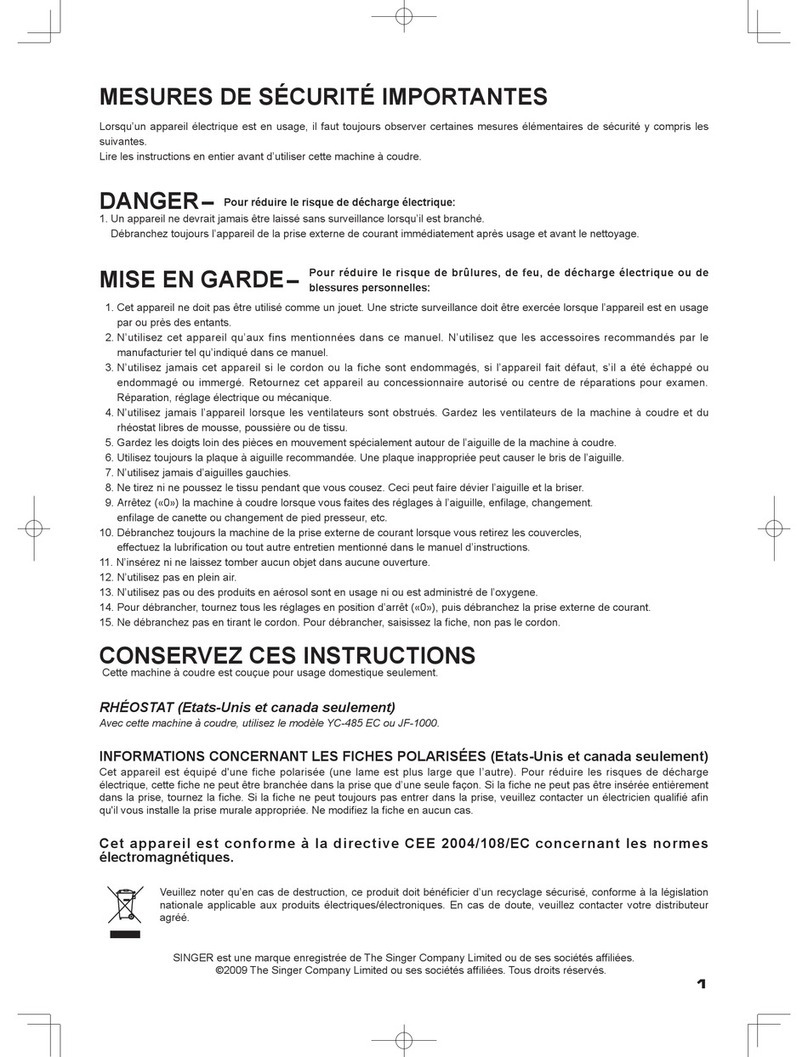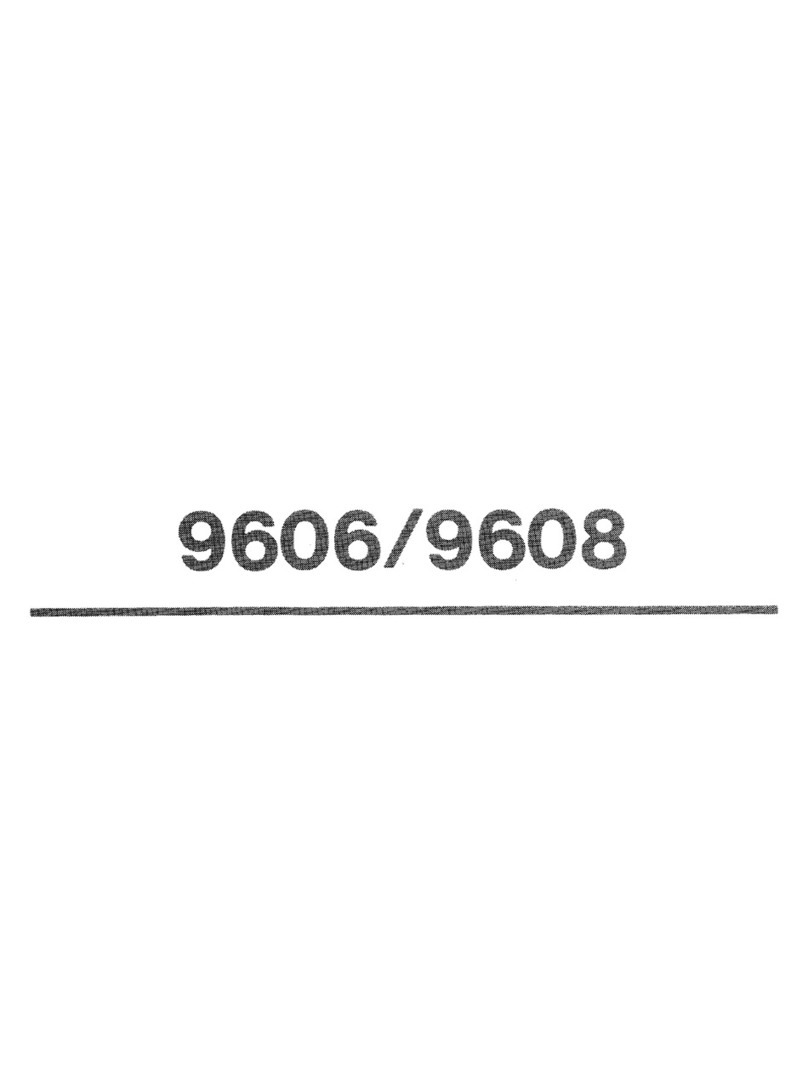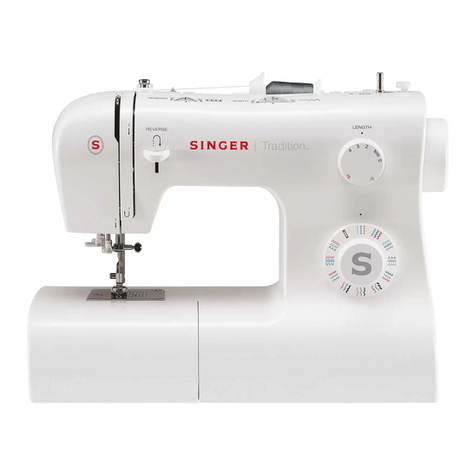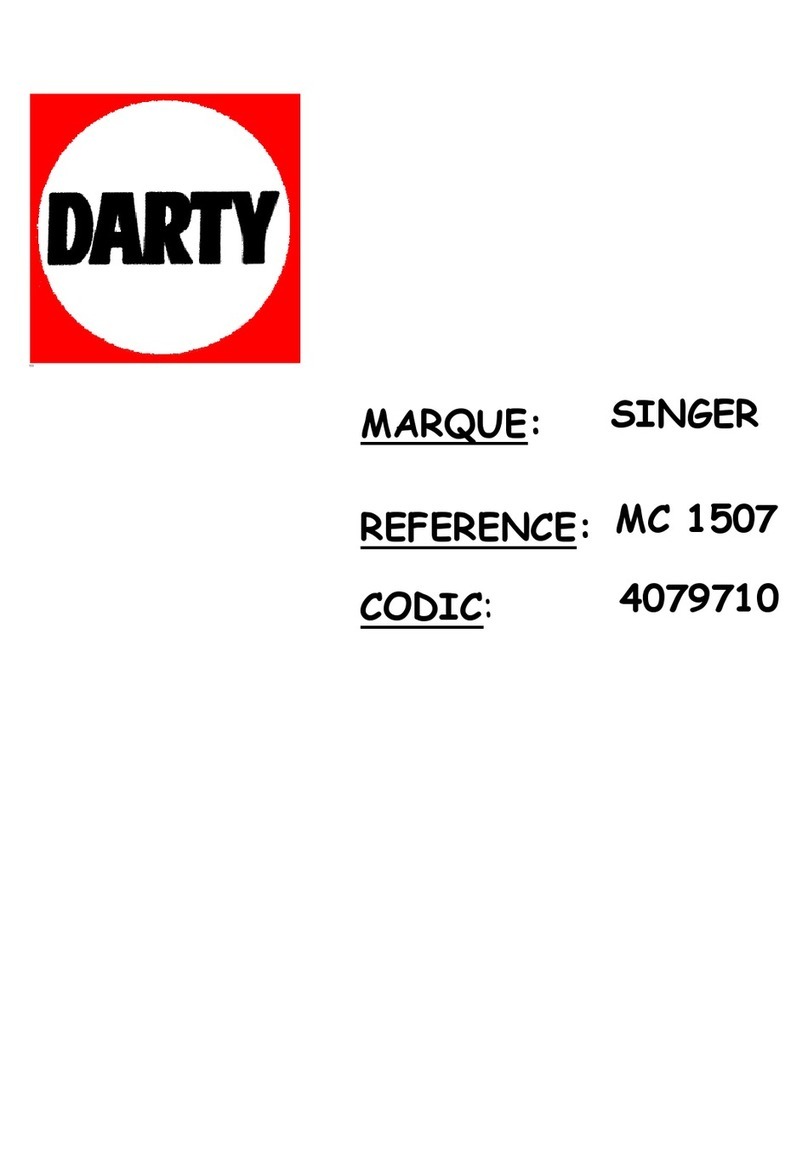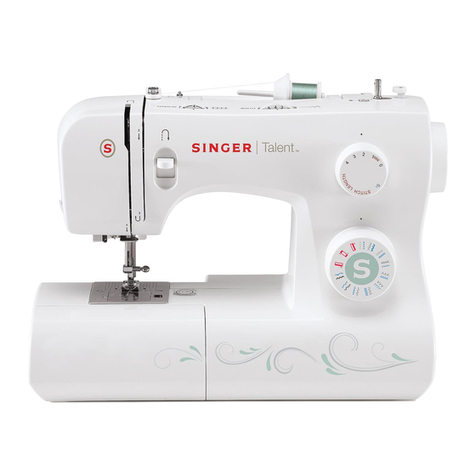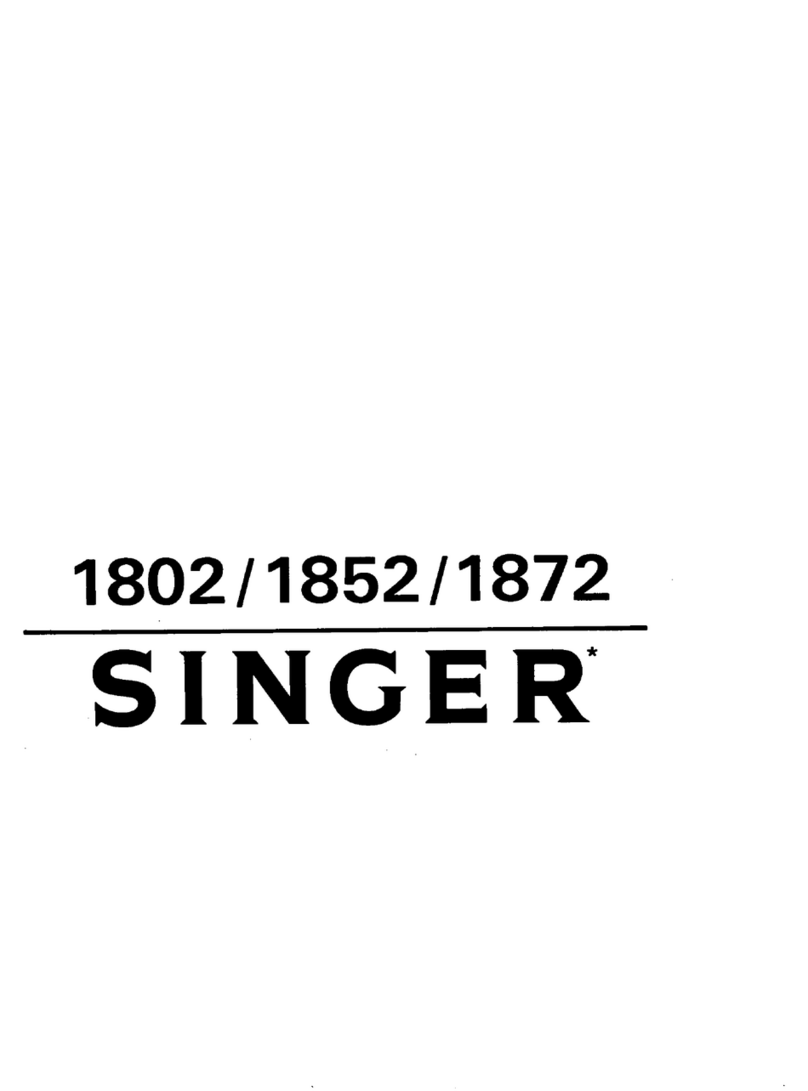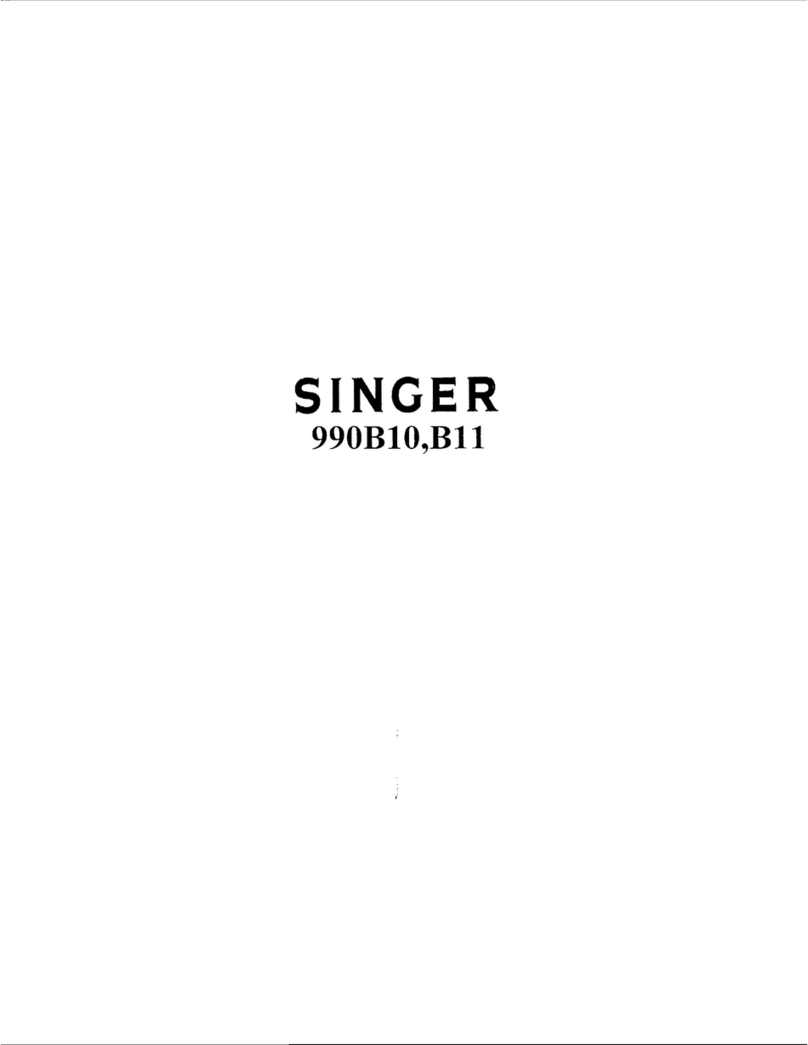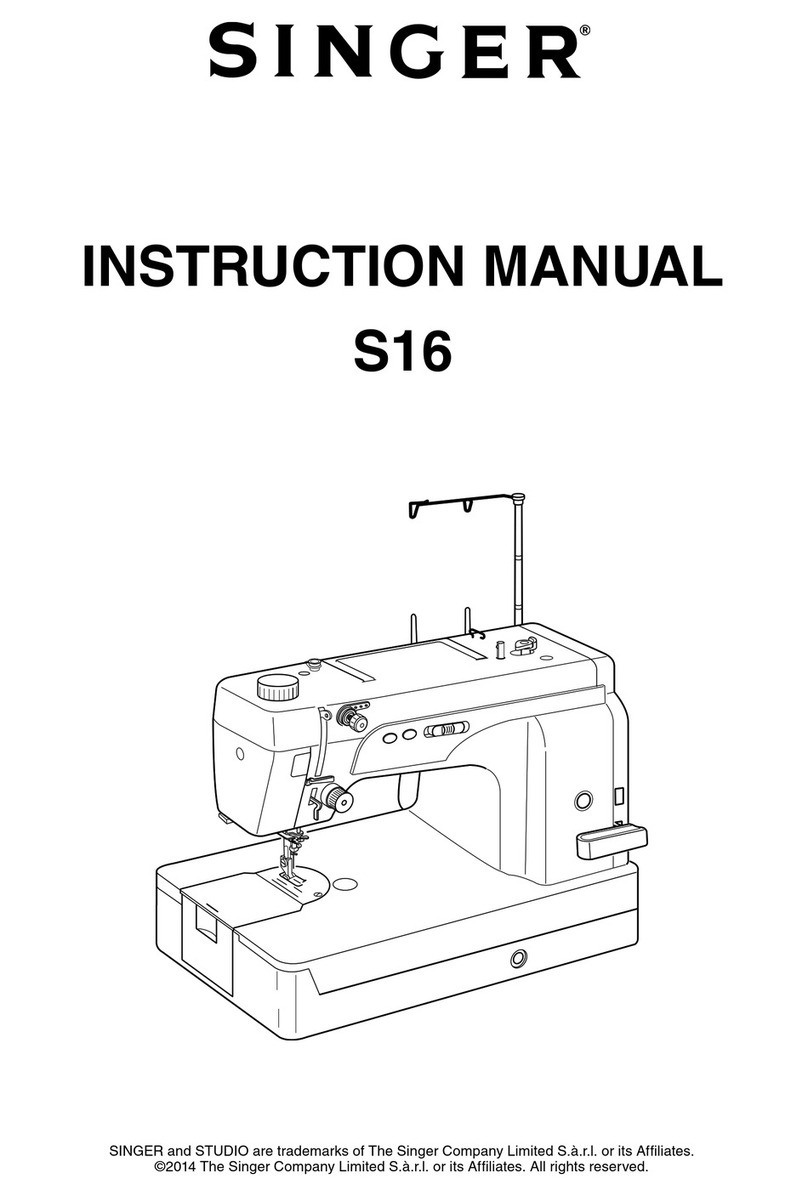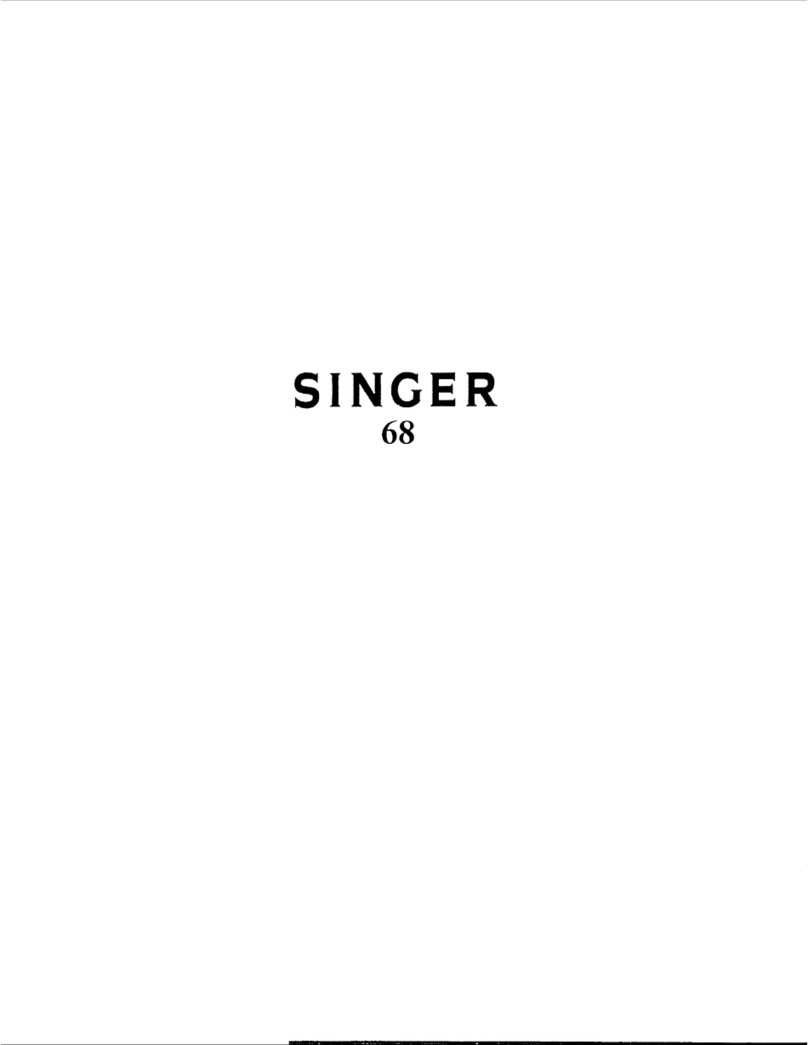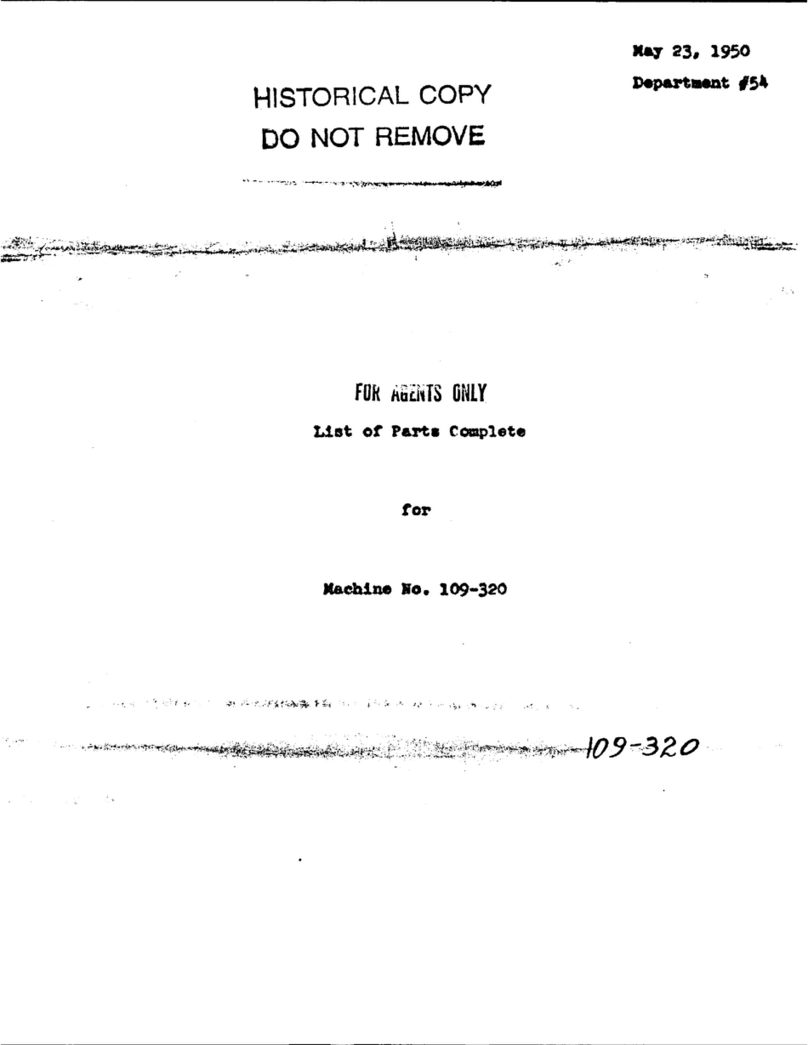Description
Ciass
271K
Machines
Top quality lockstitch buttonholers in light and
medium
weight materials at speeds up to 3,000 stitches per
minute.
General Characteristics
Single needle Catalogue
1526.
Lockstitch.
Automatically lubricated rotary sewing hook.
Visual
gauge
gives easy check on
amount
of oil in reservoir.
Fast, completely automatic sewing cycle.
Link
take-up.
The cycle is completed with the take-up just below its
highest
point.
The buttonhole is automatically cut during the last stitch
of
the
cycle.
At
the
completion of
the
cycle
the
initial pressure on
the
clamp lifting mechanism triggers off the needle thread
cutting
and
clamping
blades
so
that
the
needle
thread'
is cut and then retained in the clamp check. As the clamp
check
is
raised
the
bobbin
thread
is
cut.
Tying stitches made at beginning and
end
of each button
hole provide perfect starting stitches and a securely
fastened
bar
at
finish.
Needle thread re-trimming device gives uniformly trimmed
thread
ends.
Positive, gear-driven, continuous feed, spaces stitches
evenly around buttonhole giving neat uniform stitch
appearance
under
all
conditions.
Stitch gear changes made without use of special tools.-
Unique two speed drive automatically slows arm shaft to
half, and the stop cam to quarter, operating speed before
entering stop position. This action ensures a positive
stop
with minimum strain on
the
stop
motion.
Shock
reducing knife bar
stop
provides
cushion
of air
enabling knife bar to return quietly and safely after cutting
buttonholes.
Safety clamp lock prevents operator raising work clamp
until
buttonhole
cycle is completed.
Hand ratchet device enables operator to restart stitching
at
any
part
of
buttonhole.
Bobbin winder attached to belt guard.
Double angle
buttonhole
knife provides maximum
clear-.
ance
above
the
work clamp
when
sewing heavy materials
and
gives
an improved
cleaner
cut.
Needle bar stroke:
1-23/64
inch (34.5mm).
Clearance under clamp:
3/8
inch (9.5mm).
Machines can be tipped to left or rear for servicing.
Special
Features
of
Machine
Varieties
Class
Applications
Stitch
Length
of
Buttonhole
Style
of
Ends
Knives
Speed
271
K11
Dress
and
sports
shirts,
dresses,
pyjamas,
skirts
and
other
garments
Straight
purl
or
whip
stitch
3/8
inch
to
3/4
inch
(9.5
to
19mm)
Supplied
up to
1inch
(25.4mm)
Square
or
wide
bar
3/8
inch
to
1
inch
(9.5
to
25.4mm)
in
steps
of
1/16
inch
(1.6mm)
3.000
stitches
per
minute
271
K12
Dress
and
sports
shirts,
dresses,
pyjamas,
skirts
and
other
garments
Straight
purl or
whip
stitch
1/2
inch
to
11/16
inch
(12.7
toj
7.5mm)
Supplied
up
to
1
inch
(25.4mm)
Elongated
bar
3/8
inch
to
1
inch
(9.5
to
25.4mm)
in
steps
of
1/16
inch
(1.6mm)
2.700
stitches
per
minute
271
K13
Dress
and
sports
shirts,
dresses,
pyjamas,
skirts
and
other
garments
Straight
purl or
whip
stitch
3/4
inch to 1-1
/2
inch
Square
or
(19
to
38mm)
wide
bar
3/4
inch
to
1
-1/2
inch
(19
to
38mm)
in
steps
of
1/16
inch
(1.6mm)
3.000
stitches
per
minute
271
K14
Knit
goods,
linen
or
cotton
garments
Whip
stitch
top
cord
3/8
inch
to
3/4
inch
(9.5
to
19mm)
Supplied
up
to
1 -1
/4
inch
(32mm)
Square
bar.
Taper
bar
at ifinish
3/8
inch
to
1
-1/4
inch
(9.5
to
32mm)
in
steps
of
1/16
inch
(1.6mm)
2.700
stitch
es
per
minute
•1/4
inch
2,700
bar.
(9.5
to
32mm)
stitches
per
Taper
bar
in
steps
of
minute
at finish
1/16
inch
(1.6mm)
linen
or
cotton
garments
stitch
top
cord
Button
hole
sewn
'twice
around"
(9.5
to
19mm)
Supplied
up
to
1
-1/4
inch
(32mm)
271
K211
For
installation
on
Automatic
Sequential
Electro-mechanical
Device
257464
Straight
purl or
whip
stitch
3/8
inch
to
3/4
inch
(9.5
to
19mm)
Supplied
up
to
1
inch
(25.4mm)
Square
or
wide
bar
3/8
inch
to
1
inch
(9.5
to
25.4mm)
in
steps
of
1/16
inch
(1.6mm)
2.700
stitches
per
minute
271
KX1
Dress
and
sports
shirts.
dresses,
pyjamas,
skirts
and
other
garments
Straight
purl
or
whip
stitch
1/2
inch
to
1
inch
(12.7
to
25.4mm)
Eyelet
and
square
bar
at
finish
3/8
inch
to
1
inch
(9.5
to
25.4mm)
in
steps
of
1/16
inch
(1.6mm)
2.700
stitches
per
minute
